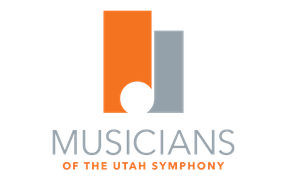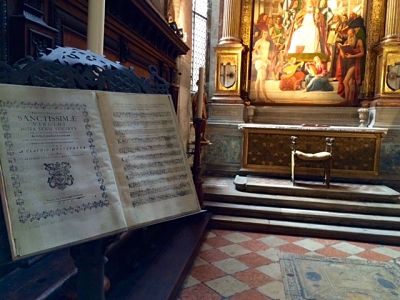Italy
The landscape changes a lot from a window on the train. The Italian Alps still have snow and the curvy tracks slow down the train and give you a chance to enjoy the view. We noticed the houses all have red-tiled roofs and they’re not in nice neat rows like we might have seen in Austria. Clay courts for tennis are a common sight and various lakes and rivers are noticeable. Lumber yards, waterfalls and tunnels are especially common. The train station in Venice is crowded with people from all over the world. Before our time in Venice is through, my red University of Utah baseball cap causes an unexpected meeting with a family from Holladay, Utah. I usually just wear it so Lisa can help spot me in a crowd. We also have a system in place for an emergency whistle if that fails.
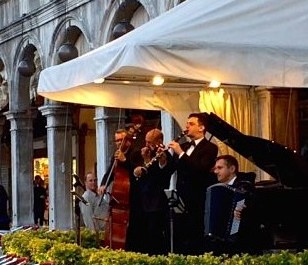
One of the “Dueling Orchestras” in St. Mark’s Square
Getting to St. Mark’s Square (near our home for a few days) requires a boat ride of about 30 minutes from the train station. The sight of a beautiful city coming out of the water makes a big impression! It’s hard to decide which side of the boat to stand on, the view is so amazing. The big square at San Marco is bordered by an imposing palace, museums and high-end shops and restaurants. Vendors get in your face trying to sell roses, trinkets, extenders for taking selfies, flying toys, purses, etc. The wheels of our suitcases bumped over the cobblestone roads and occasional passageways. Lisa has memorized the lefts and rights to our B&B, a suggestion from Rick Steves. Our host is “Riccardo”, who grew up in Venice and operates the B&B where he grew up and still lives. We get “Sister’s Room”. She lives in Lebanon. The building is 480 years old and is being outfitted for an elevator, but for now we tackle the stairs 16th century style. It’s a tough haul to the fourth floor, but we made it.
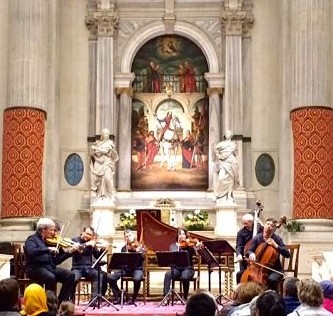
Interpreti Venezia
On our first night in Venice we went to a church well known to Antonio Vivaldi to hear a concert of his music and other Italians. The eight person group is called “Interpreti Veneziani”, and they performed the “Four Seasons” and “alla Rustica” by Vivaldi, the Tartini Cello Concerto with Davide Amadio, the Paganini Caprice No. 9 and an encore by Corelli. Four of the eight musicians took turns in the solo role and each one was excellent. The music had variety, personality and terrific energy. We can imagine it being one of the highlights for our time in Europe. On the morning of our second day we saw Tom Hanks filming a scene on the balcony of St. Mark’s Basilica. We heard it was a sequel to “The da Vinci Code”. It helped us put “due e due” together when we were remembering a crowd scene on the same square the night before! We look forward to it’s theatrical release.
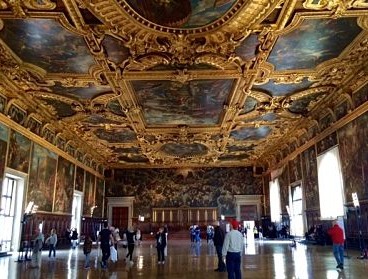
Doge Palace ceilings
We toured the Doge’s Palace, a building with amazing works of art. The rooms are huge and they are ornately decorated with statues on the ceilings, pink and white exterior walls and floors that could have used a level. We also toured the Murano Glass Factory on the island of Murano. It gave us an opportunity to see several glass blowers and see their stunning showrooms.
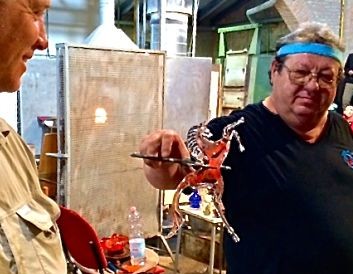
Glass-blowing at Murano Glass
Venice was home to two musical priests. Claudio Giovanni Antonio Monteverdi helped bridge the gap between the Renaissance and Baroque periods, and “The Red Priest”, Antonio Lucia Vivaldi, was one of the great baroque composers, predating both Bach and Handel. We tried to see all the churches where they worked. The orphanage where Vivaldi composed and where the young ladies performed still stands. High above the main floor, behind metal grates, these young musicians were admired for decades by the people of Venice and visiting music lovers. Unfortunately, Vivaldi’s final days were away from Venice and he died in poverty.
What would a trip to Venice be without a gondola ride? The city’s rising water levels have damaged a lot of the lower floors, steps and gates along the canals, but taking a ride with an experienced gondolier is still fun! Ours could stop on a dime and negotiate the tightest opening. We didn’t get the deluxe package you can see elsewhere. It can include someone playing the accordion and another singing some Italian love song. The gondoliers all wear striped shirts, own their own boat and must go through a long apprenticeship before taking on customers. I’m still wondering how it is they stand in the back, untethered, and never fall in the water!
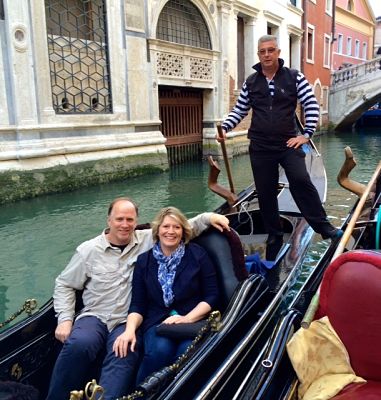
Evening gondola ride
We enjoyed an orchestra concert at the Malibran Theater with the Orchestra of the Teatro La Fenice conducted by Michel Tabachnik. The orchestra played Brahms Tragic Overture, the Webern Sinfonia Op. 21, “Livre pour cordes” by Boulez and Symphony No. 4 by Brahms. The orchestra played with a lot of emotion.
The Teatro La Fenice is an opera house that has been built and rebuilt a few times during it’s lifetime. Opera premieres by Rossini, Donizetti, Verdi, Wagner and Stravinsky all happened here along with the debut of Maria Callas. Though the opera house’s schedule did not allow for us to hear an opera, we did enjoy taking an extensive tour and witness part of a rehearsal. One thing you might notice about Venice is that you never see a car or bicycle. The only thing on wheels are the dozens and dozens of dollies you see making deliveries to the restaurants, homes and businesses. Without normal street traffic, the canals can easily get backed up, but the boat captains and gondoliers are so adept at maneuvering their crafts, there must be very few accidents.
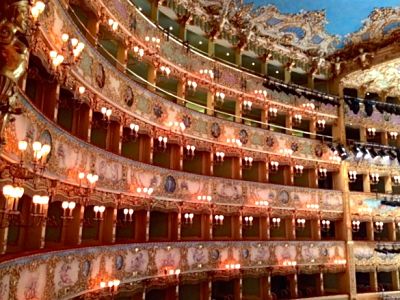
La Fenice Opera House
Besides the stores selling glass, gelato and purses, one very popular sight are all the stores and vendors selling masks. Venetians love to celebrate Carnival, and it lasts for ten days! It usually takes place in February and visitors flood the islands to take part. The origins go back to the early 1600s during the time of a great plague. The masks worn by the doctors included long noses to help them keep a safer distance from their sick patients. It was common for us to see children wearing colorful masks. For some parents, coming back in the middle of winter was not an option. We enjoyed many good Italian meals. They know how to cook Italian in Italy, but who would have thought Lisa could get all that pasta and pizza without gluten?
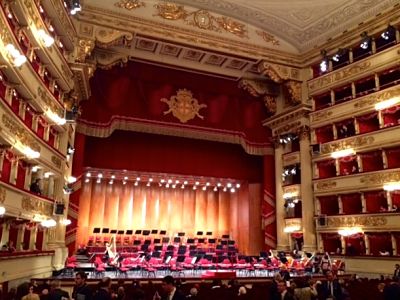
Teatro La Scala interior
A “workers’ holiday in Milan affected our travel slightly, but we managed to take part in a couple of important events which helped kick off the 2015 World Exposition. At Teatro La Scala, we heard the opening night performance of Verdi’s “Turandot”, conducted by Riccardo Chailly and attended by Prime Minister Mateo Renzi, his wife a daughter and a substantial entourage. I don’t think they were as interested in being there as we were. There was an actual “red carpet” and film crews everywhere. La Scala is a beautiful opera house and the performance included some dramatic costumes, sets and lighting. The orchestra played in a perfectly understated way and Chailly seemed to manage the soloists, choir and orchestra like an experienced magician. The voices were all good as was the orchestra.
Upon exiting the theater, our box seats had us funneling out of the theater ahead of the prime minister. Somehow we ended up on the red carpet. All the photographers appeared ready for their cue to start shooting. It made me think of that Oscar winning movie with Roberto Benigni, “Life is Beautiful”, when he gets mistaken for someone famous and the paparazzi start following his every move. We escaped that brush with fame and made our way through the rain to the queue for a cab. Unfortunately, the workers’ strike meant cabs were few and far between. Eventually we were able to hail a cab and make it back to Hotel Johnny, our home for two days.
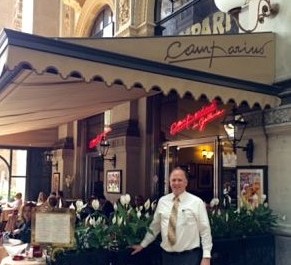
Toscanini – Verdi hangout in Milan
On day two of the Expo, the Berlin Philharmonic with Simon Rattle was playing at La Scala. They played Janacek’s Sinfonietta and Bruckner’s 7th Symphony. They used 11 trumpets in the Sinfonietta and a lot of extra brass in the Bruckner. Playing 1st oboe this time was Albrecht Mayer who James Hall and I met ten years ago in Berlin. He is a big name soloist and, like flutist Emmanuel Pahud, is often absent from Berlin Phil. performances. It was a treat to hear Albrecht. His playing had beauty and personality. As in the two previous Berlin Phil. concerts we heard, the strings and principal horn and trumpet stood out for their excellence.
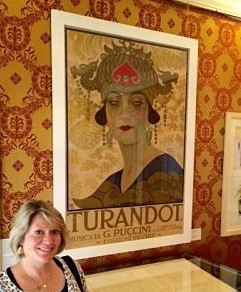
Turandot exhibit at La Scala Museum
La Scala has a terrific museum which features the opera house’s outstanding past. Tributes to Toscanini, Verdi, Puccini and all the greats make for an enjoyable visit. One tribute was to the great Italian actress, Eleanore Duse. Because Duse is in Lisa’s family tree, we wondered if she might be part Italian. She looks a little like my mother-in-law, so maybe!
The last part of our Italian stay would take place at Lake Como, one of the world’s most beautiful lakes. Carved out by ice age glaciers, the lake looks like a distorted stick figure with no arms. Leonardo da Vinci came here from his home in Milan. Operas were composed here by Rossini, Bellini, Verdi and Puccini. Felix Mendelssohn painted pictures of the lake. Films like “Star Wars II” and “Casino Royale” used the lake as a backdrop, and Madonna, Sting and George Clooney have called it home. The Alps rise up from near the lake’s edges and pastel villas be-speckle the shorelines. We rode the ferry that connects places like Bellagio, Lenno and Varenna, where we stayed for two days. Even two overcast days couldn’t take the beauty away from this magical place. We might wish for a couple more days. Well, maybe the next sabbatical!
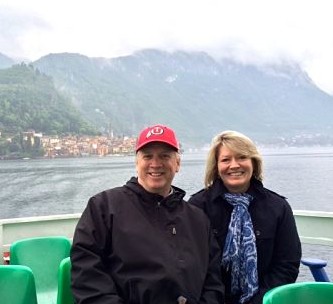
Boat ride on Lake Como
Next….the Swiss Alps!
– Robert Stephenson and Lisa Byrnes
